 by our College Data Analytics Team
by our College Data Analytics TeamDeVry University - Illinois total enrollment is approximately 20,832 students. 6,979 are undergraduates and 511 are graduate students.
Male/Female Breakdown of Undergraduates
The full-time DeVry University - Illinois undergraduate population is made up of 64% women, and 36% men.
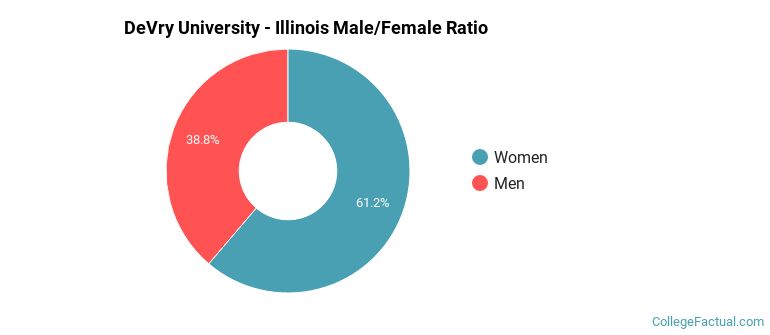
For the gender breakdown for all students, go here.
DeVry University - Illinois Racial/Ethnic Breakdown of Undergraduates
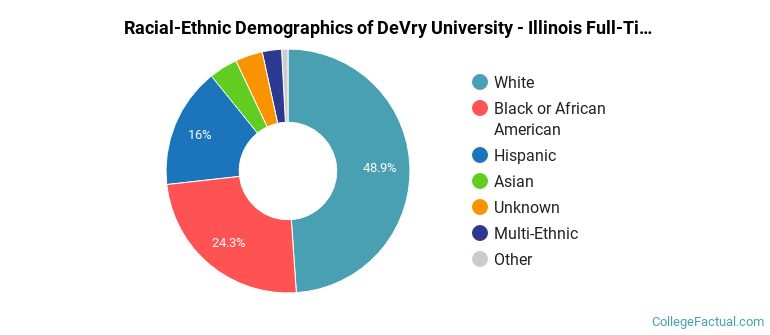
| Race/Ethnicity | Number |
|---|---|
| White | 3,170 |
| Black or African American | 1,756 |
| Hispanic | 1,071 |
| Unknown | 414 |
| Asian | 245 |
| Multi-Ethnic | 195 |
| International | 48 |
| Native Hawaiian or Pacific Islander | 24 |
See racial/ethnic breakdown for all students.
Male/Female Breakdown of Graduate Students
About 61% of full-time grad students are women, and 39% men.
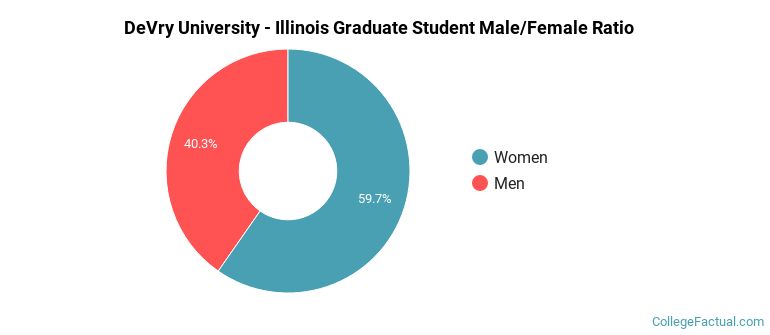
For the gender breakdown for all students, go here.
DeVry University - Illinois Racial-Ethnic Breakdown of Graduate Students
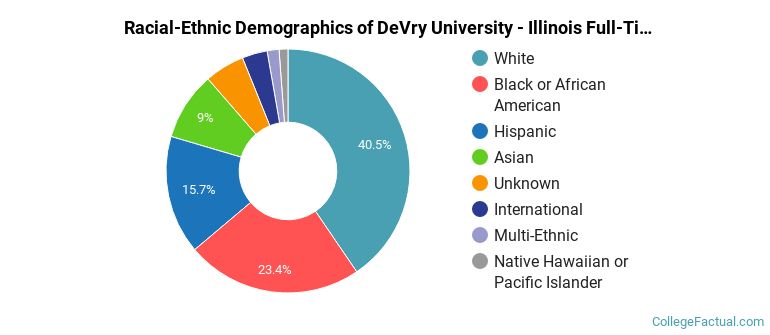
| Race/Ethnicity | Number |
|---|---|
| White | 192 |
| Black or African American | 125 |
| Hispanic | 71 |
| Unknown | 59 |
| Asian | 44 |
| Multi-Ethnic | 6 |
| Native Hawaiian or Pacific Islander | 5 |
| International | 4 |
See racial/ethnic breakdown for all students.
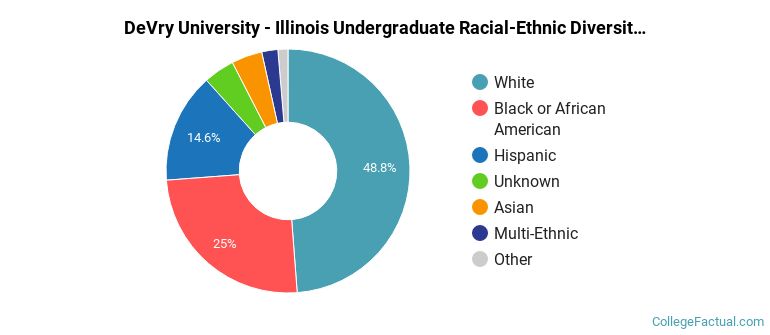
| Race/Ethnicity | Number |
|---|---|
| White | 9,449 |
| Black or African American | 5,359 |
| Hispanic | 3,073 |
| Unknown | 1,276 |
| Asian | 760 |
| Multi-Ethnic | 502 |
| International | 135 |
| Native Hawaiian or Pacific Islander | 101 |
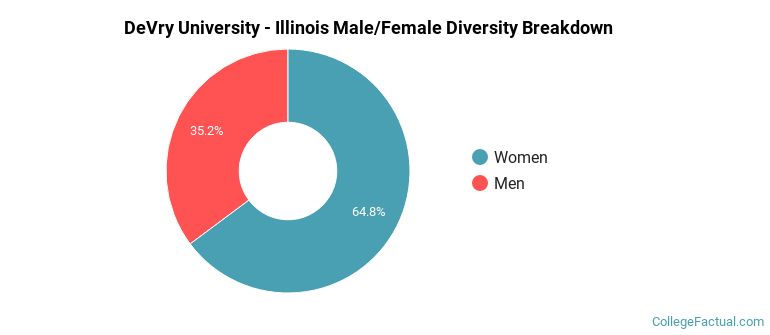
There are approximately 13,750 female students and 7,082 male students at DeVry University - Illinois.
DeVry University - Illinois ranks 50 out of 2,183 when it comes to geographic diversity.
85.64% of DeVry University - Illinois students come from out of state, and 0% come from out of the country.

The undergraduate student body is split among 45 states (may include Washington D.C.). Click on the map for more detail.
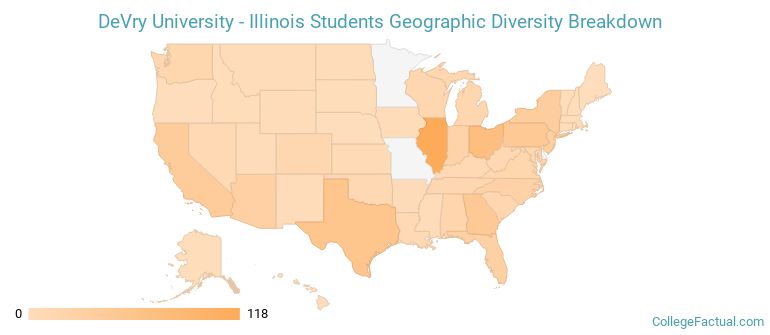
| State | Amount |
|---|---|
| Illinois | 118 |
| Ohio | 73 |
| Texas | 56 |
| Georgia | 48 |
| Pennsylvania | 47 |
Students from 54 countries are represented at this school, with the majority of the international students coming from India, Mongolia, and Jordan.
Learn more about international students at DeVry University - Illinois.
A traditional college student is defined as being between the ages of 18-21. At DeVry University - Illinois, 5.51% of students fall into that category, compared to the national average of 60%.
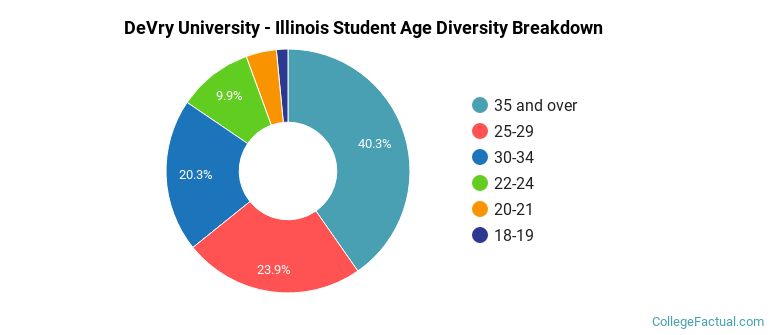
| Student Age Group | Amount |
|---|---|
| 35 and over | 6,757 |
| 25-29 | 4,012 |
| 30-34 | 3,400 |
| 22-24 | 1,665 |
| 20-21 | 677 |
| 18-19 | 257 |
| Under 18 | 0 |
Footnotes
*The racial-ethnic minorities count is calculated by taking the total number of students and subtracting white students, international students, and students whose race/ethnicity was unknown. This number is then divided by the total number of students at the school to obtain the racial-ethnic minorities percentage.
References
Department of Homeland Security Citizenship and Immigration Services
Find out how College Factual created their Diversity Rankings.